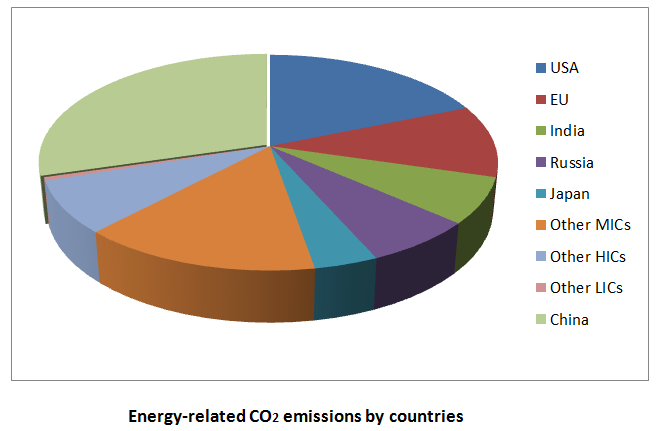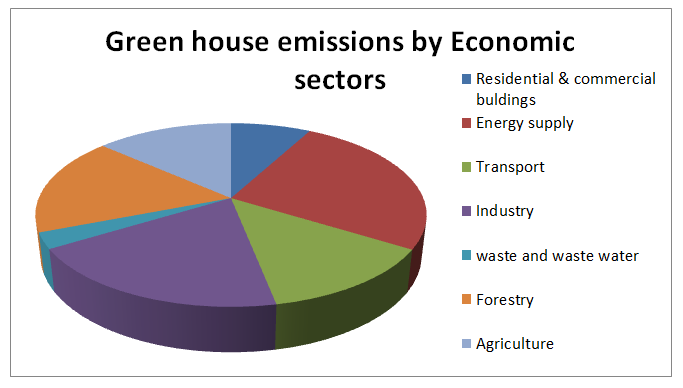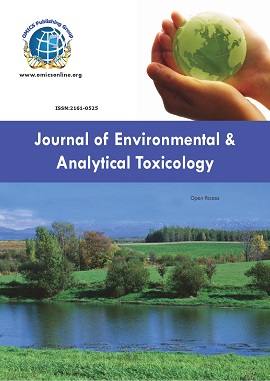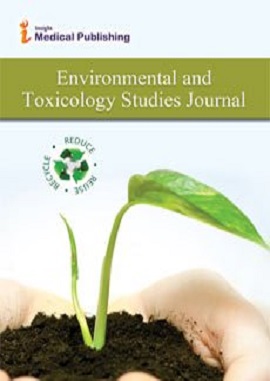Theme:
Environmental Toxicology 2020
Conference Series llc LTD is a renowned organization that organizes highly prominent Online Conferences around the world. Environmental Toxicology 2020 welcomes all the participants around the globe which is going to be held during May 25-26, 2020 through Webinar. The subject of the event is, “Environmental Education in a Time of Eco Systemic Crisis".
The main objective of the conference is to spread awareness about Environment and Pollution control. The Environmental Toxicology 2020 certification corporation offers several different options for board certification in Ecology Certification. Ecology studies the interactions among organisms and their environment. Topics of interest include the biodiversity, distribution, biomass, and populations of organisms.
The scientific event offers a best stage with its efficient scientific program to the group of spectators which has intelligent board discourses, keynote addresses, comprehensive talks and notice sessions on the themes like Environmental Pollution, Water Pollution and Treatment, Air Pollution and Treatment, Industrial Pollution, Marine Pollution, Solid Waste Disposal, Waste Management and Treatment, Pollution Sources, Pollution Control Technologies and Devices, Bioenergy and Biofuels, Environmental Sustainability and Development, Pollution and Health Effects, Climate Change, Global Warming, Noise Pollution, Green and Renewable Energy.
Conference series llc Ltd has organized more than 3000 Global Events which includes 650+ Conferences, 1300+ Symposiums and 1300+ Workshops in Europe, USA & Asia with a collective support from 1100 more scientific societies and publishers Over 31000 eminent personalities, reputed scientists as editorial board members have contributed to 750+ Open access journals.
Why would it be worthwhile for us to do it?
1. Since our consuming habits have been developed notably. We expend all the new strong items which are available subsequently; we deliver a steadily expanding measure of waste. Out of which two-third of that waste can be either reused or composted.
2. Winding up in squander landfills produces leachate and landfill biogas which are disparaging to the water and air. Biogas contains basically methane, an ozone-depleting substance that is 25% more effective than carbon dioxide (CO2).
3. Since, the direction of our waste is a perfect method for living. It shows the amount we regard the general population nearest to us. Squander arranging choices we make today will urge our youngsters to learn and impact the quality of life of future generations.
Why to Attend?
Specialists from around the globe concentrated on finding out about Environmentlogy toxicology and its advances; this is your best chance to achieve the biggest array of members from the Ecology people group. Direct introductions, convey data, meet with present and potential researchers, make a mark with better approaches for treatment and mind and get name acknowledgement at this two day occasion. Amazingly famous speakers, the latest procedures, advancements, and the most up to date refreshes in Environmental toxicology are integral to this meeting.
Target Audience:
-
Environmentalists
-
Environmental researchers and scientist
-
Toxicologists
-
Ecologists
-
Soil Scientists
-
Pest Control Professionals
-
Plant Scientists
-
Biodiversity Professionals
-
Students in Public Health
-
Geologists
-
Epidemiologists
-
Environmental Science Professors
-
Agricultural Scientists
-
Oceanographer
-
Marine Biologists
-
Health Care Departments
-
Occupational Therapists
Track 1: Pollution
Pollution alludes to the nearness and unwanted changes happening in the physical, concoction, and organic creation of the common habitat comprising of air, water, and soil that has destructive impacts. Contaminations, the segments of contamination, can be either outside substances/energies or normally happening contaminants. Contamination is the presentation of contaminants into the earth and that is called natural contamination.
- Urban pollution
- Water Pollution
- Air pollution
- Noise pollution
- Radioactive contamination
Track 2: Climate Change
Climate change, additionally called an Earth-wide temperature boost, alludes to the ascent in normal surface temperatures on Earth. Environmental change is an adjustment in the factual circulation of climate designs when that change goes on for an extended time allotment (i.e., decades to a large number of years). Natural change may allude to an adjustment in normal climate conditions, or in the time variety of atmosphere inside the setting of longer-term ordinary conditions. Environmental change is brought about by elements, for instance, biotic methodology, varieties in sunlight based radiation gotten by Earth, plate tectonics, and volcanic emanations.
- Climate variability
- Ocean-atmosphere variability
- Life
- Human influences
- Orbital variations
Track 3: Environmental Health and Safety
Environment Health and Safety is an order and claim to fame that reviews and actualizes pragmatic parts of natural insurance and wellbeing at work. From a natural perspective, it includes making a logical way to deal with yielding with ecological guidelines, such as overseeing waste or air emanations right to helping locales diminish the organization's carbon impression. From a wellbeing and security perspective, it includes trying endeavors and systems for recognizing working environment perils and decreasing mishaps and presentation to unsafe circumstances and substances.
- Environmental
- Occupational health and safety
- Community health and safety
- Construction and decommissioning
Track 4: Waste Recycling and Management
The collection, transport, processing, managing and monitoring of waste materials is known as waste management .Waste management could be a distinct observe from resource recovery that focuses on the optimum utilization of the natural resources with social responsibility. It aims at unearthing the recent innovations and developments in this field with a view to check global warming. All the activities and actions needed to manage waste from is getting down to its final disposal.
- Disposal methods
- Recycling
- Re-use
- Liquid waste-management
- Legislation
- Government-mandated demand
- Recyclates
Track 5: Health Economics and Public Policies
Health resources include all the staff that is directly or indirectly involved in any health issue concern the field of health human resources deals with problems like designing, development, performance, management, retention, data, and analysis on human resources for the health care sector. Health Economics and Public Policies in the field identifying with authority, administration, and organization of public health, health awareness systems, clinics, and doctor's facility systems.
- Medical economics
- Behavioural economics
- Mental health economics
- Biomarkers
- Environmental chemistry
Track 6: Regulatory Toxicology
Regulatory toxicology comprises the study of a toxicity profile that is compared with other known toxicants. Regulatory toxicology works as the major centre for laws that limit exposures for people and the environment. The regulatory toxicology is to control production, use, and deposition of dangerous materials to prevent adverse effects on human health and the environment. This requires enough information on the hazardous properties of a chemical compound, their relevance to man and of human and environmental exposure, which is a prerequisite for appropriate risk assessment and the decision whether regulatory consequences are warranted.
Track 7: Medical Toxicology
Medical toxicology is a subspecialty of medicine focusing on toxicology and providing the diagnosis, management, and prevention of poisoning and other adverse effects due to medications, occupational and environmental toxicants, and biological agents. Medical toxicologists are involved in the assessment and treatment of a wide variety of problems including acute or chronic poisoning, adverse drug reactions (ADRs), drug overdoses, envenomation, substance abuse, industrial accidents, and other chemical exposures.
Track 8: Occupational Toxicology
Occupational Toxicology is involved with health effects from exposure to chemicals in the workplace. The objective of the occupational toxicologist is to prevent adverse health effects in workers that arise from exposures in their work environment. Occupational toxicologists assess the hazards and risks to health posed by chemicals encountered in the workplace. The risk assessments provided by occupational toxicologists are crucial for avoiding ill health linked to work.
- Biological monitoring
- Heavy metals
- Solvents
- Asbestos
Track 9: Agricultural Toxicology
The most important risk in agriculture derives from exposure to pesticides. Evaluation of the extensive toxicological studies required for all pesticides. From the past 50 years, agriculture has deeply changed with a massive utilization of pesticides and fertilizers to enhance crop protection and production, food quality and food preservation. Pesticides are unique chemicals as they are intrinsically toxic for several biological targets, are deliberately spread into the environment, and their toxicity has a limited species selectivity. The post-marketing risk assessment takes place during the use of pesticides and aims at assessing the risk for exposed operators.
Track 10: Green Chemistry
Chemical products and processes that reduce or eliminate the use or generation of hazardous substances is known as green chemistry. Green chemistry applies across the life cycle of a chemical product, as well as its style, manufacture, use, and supreme disposal. Green chemistry focuses on the environmental impact of chemistry, including technological approaches to preventing pollution and reducing the consumption of non renewable resources. It prevents pollution at the molecular level.
- Atom economy
- Designing safer chemicals
- Design for energy efficiency
- Reduce derivatives
- Catalysis
Track 11: Global Warming
A gradual increase in the overall temperature of the earth's atmosphere generally attributed to the greenhouse effect caused by increased levels of carbon dioxide, CFCs, and other pollutants. Global warming, also referred to as climate change, is the observed century-scale rise in the average temperature of the Earth's climate system and its related effects. Multiple lines of scientific evidence show that the climate system is warming. Future climate change and associated impacts will differ from region to region. Anticipated effects include increasing global temperatures, rising sea levels, changing precipitation, and expansion of deserts in the subtropics.
- Observed temperature changes
- Physical drivers of climate change
- Greenhouse gases
- Climate change feedback
- Climate models
Track 12: Human Impact on the Environment
Human impact on the environment includes changes to biophysical environments and natural resources. It gets affected by humans, including global warming, environmental degradation, mass extinction and ecological collapse. Adjusting the environment to fit the needs of society is causing severe effects, which become worse as the problem of human overpopulation continues.
- Rapid Growth of Human Population
- Technology
- Irrigation
- Biodiesel
Track 13: Environmental Sustainability
Environmental sustainability is the rate of renewable resource harvest, pollution creation and non-renewable resource exhaustion that can be continued open-endedly. If they cannot be sustained open-endedly then they are not sustainable
Track 14: Natural Hazards & Disaster Management
Natural disaster is that the consequence once a natural hazard affects humans. A natural hazard will hence never result in a natural cataclysm in areas without susceptibility like strong earthquakes in unoccupied areas. The term natural has consequently been uncertain as a result of the events merely don't seem to be hazards or disasters while not human participation
- Geological hazards
- Meteorological or climate hazards
- Flood
- Multi-hazard analysis
Track 15: Environmental Protection
Protection of Natural Environment by Individuals, Organisations and governments is known as Environmental protection .Its objectives area unit to conserve natural resources and also the existing natural setting and, wherever potential, to repair injury and reverse trends.
- Voluntary environmental agreements
- Ecosystems approach
- International environmental agreements
- Government protection
Track 16: Epidemiology and Biostatistics
To comprehend the determinants of illness and improve wellbeing, we can apply, creates (Epidemiology and biostatistics). The clear and explanatory methodologies (the study of disease transmission) expected to examine and comprehend the perplexing reasons for significant general medical issues and to create successful systems to avert them. The biostatistics program fixates on the improvement and use of hypothesis and techniques in the accumulation, investigation, and elucidation of information utilized in general wellbeing and other biomedical sciences.
Track 17: Environmental Geology
Environmental geology is the branch of geology that is associated with the interactions between humans and the geologic environment. We can identify, rectify and prevent environmental problems by environmental geology It is like hydrogeology, Environmental geology is an applied science agitated with the practical application of the principles of geology in the solving of environmental problems it's a multidisciplinary field that's closely connected to engineering earth science and, to a lesser extent, to environmental geographic and it includes fossil fuels, minerals, water and land use etc.
- Earthquakes
- Volcanoes
- Extraction and Mining
Track 18: Environmental Toxicology and Chemistry
Environmental Toxic substances and chemistry describes original experimental or theoretical work that considerably advances understanding within the space of environmental Toxic Substances, environmental chemistry, and hazard/risk assessment. Environmental Toxic Substances and Chemistry is knowledge domain topics that integrate the sphere of Toxic Substances within the environment; environmental, analytical, and molecular chemistry of system.
- Governing Policies on Environmental Toxicity
- Sources of environmental toxicity
- PCBs
Track 19: Ecology & Environmental Engineering
Ecology is that the study of the relationships between living organisms, together with humans, and therefore their physical environment; it seeks to grasp the important between plants and animals and the world around them. Ecologists additionally study several forms of environments.
Track 20: Environmental Safety and Risk Assessment
Risk related to a well-defined situation and a recognized threat (also called hazard) is quantitatively or qualitatively determined by risk assessment. Quantitative risk assessment needs calculations of 2 parts of risk (R): the magnitude of the potential loss (L), and therefore the chance (p) that the loss can occur.
- Hazard identification
- Chemical risk assessment
- Carcinogen risk assessment
Track 21: Environmental Compliance
Environmental Compliance covers a broad range of environmental laws, regulations, and standards create to manage our environment. Increase in Number and scope of compliance imperatives globally is Environmental Concern. Being closely connected, environmental issues and compliance activities unit a lot of and a lot of being aligned with company performance goals and being integrated to some extent to avoid conflicts, wasteful overlaps, and gaps.
Track 22: Bioaccumulation & Ecology Impacts
Chemicals present in an organism such as, Pesticides is considered as bioaccumulation. Bioaccumulation happens once an organism absorbs a substance at a rate quicker than that at that the substance is lost by organic process and excretion. Biotransformation can strongly modify the bioaccumulation of chemicals in an organism. Intensive injury to organisms and declines in life populations are discovered at the side of long-run bioaccumulation and Biomagnification of persistent xenobiotic chemicals.
Track 23: Ocean and Climate change
Blue planet on which we live is formed by the global forces of nature called oceans. They plays a major role in life-support system for Earth and a global commons that provide us with free goods and services, from the food we eat to the oxygen we breathe .The oceans additionally regulate the world climate and that they mediate temperature and drive the weather, determinative precipitation, droughts, and floods.
Related Societies:
Europe:
European Aluminium Association; European Wastewater Treatment association; European Asphalt Pavement Association; Swedish Recycling Industries Association; Association of Independent Secondary Raw Materials Processors; European Electronics Recyclers Association; Waste Management and Recycling Cluster Textile Recycling Association.
Middle-East & Asia Pacific:
Metal Recycling Association of India; Waste Management and Recycling Association of Singapore (WMRAS); The Japan Containers and Packaging Recycling Association; Ecyclex International Recycling; Emirates Recycling Co; Lucky Recycling Ltd; Emirates Environmental Technology; Madenat Al Nokhba Recycling Services LLC; Imdaad Abu Dhabi; Beeah Tandeef; Secondary Materials and Recycled Textiles (SMART).
USA:
Northeast Resource Recovery Association; National Recycling Coalition; Solid Waste Association of North America (SWANNA); Southeast Recycling Development Council; Recycling Coalition of Utah; Agency of Natural Resources; Virginia Recycling Association; Washington State Recycling Association; West Virginia Recyclers Association; Recycling Coalition of West Virginia; Associated Recyclers of Wisconsin; Wyoming Solid Waste and Recycling Association.
Advances in the science and perception of environmental change are giving a clearer comprehension of the inborn inconstancy of Earth's atmosphere framework and its imaginable reaction to human and common impacts. The ramifications of environmental change for nature and society will depend not just on the reaction of the Earth framework to changes in radiative forcings, yet in addition on how mankind reacts through changes in innovation, economies, way of life and approach. At the point when free markets don't boost society's welfare, they are said to 'fall flat' and arrangement intercession might be expected to adjust them. Numerous business analysts have depicted environmental change for instance of a market disappointment – however, in reality, various particular market disappointments have been distinguished. The core one is the so-called 'greenhouse externality'. Ozone-depleting substance outflows are a reaction of monetarily significant exercises.
The nursery gas externality is accompanied by different other advertise failures, counting those rising from an absence of information around how to decrease emanations, network impacts and an absence of advancement inspirations. A liberal composing in the course of recent years has evaluated tradeoffs among cash and casualty threats. These qualities, in turn, serve in as appraisals of the estimation of a factual life. Quickening the improvement of unused low-carbon innovations and advancing their worldwide application are key challenges for stabilizing air greenhouse gas (GHG) outflows. Thus, innovation is at the center of current talks surrounding the post-Kyoto climate administration. The challenge of technology diffusion on a worldwide scale is too compounded by a lack of data. There is neither a clear and broadly accepted definition of what constitutes a “climate change–mitigation technology” nor a broad understanding of how such innovations are diffused globally. Prove can be marshaled to support either the view that contamination decrease is a cost burden on firms and is hindering to competitiveness, or that decreasing outflows increments productivity and spares cash, giving firms a cost advantage.
GHG is the main component of the environment and climate change. The maximum amount of GHG gases are emitted from industries, transportation, energy supply, forestry, and Agriculture.
More amount of carbon dioxide gases is produced from fossil fuels and other industrial processes i.e. 65%. People’s activity has resulted in the production of methane gas(16%), nitrous oxide(6%), fluorine gas(2%) etc.

A PESTEL analysis is a framework or tool used by marketers to analyze and screen the macro-environmental (external marketing environment) factors that affect an organization. The result of which is used to identify threats and weaknesses which is utilized as a part of a SWOT analysis.
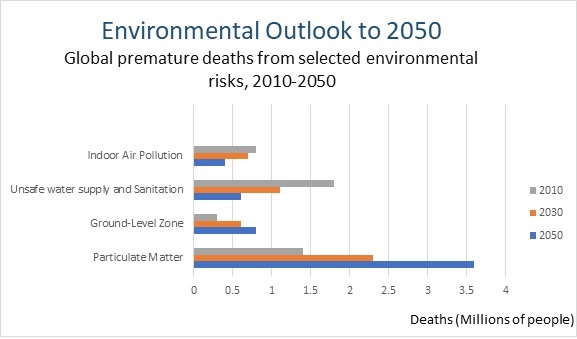
Top Societies Associated with Pollution Control Research Around the Globe
- The International Biometrics Society (Australasian Region)
- The International Environmetrics Society (TIES)
- American Statistical Association Section on Statistics and the Environment
- International Environmental Modelling and Software Society (IEMSs)
- Royal Statistical Society Environmental Statistics Section
- Worldwide pollution Control Association
- Environmental Protection Agency
- National Association of Clean Air Agencies
- Air & Waste Management Association
- Cen SARA (Central States Air Resource Agencies)
- USDA Agricultural Air Quality Task Force
- Air Pollution Control Equipment Manufacturers Association of Australia
- Australian Marine Sciences Association
- Total Air Pollution Control (TAPC) Sydney, Australia
- The Australian Water Association
- Ecological Society of Australia
- The Environment Institute of Australia and New Zealand
- Food & Agricultural Organisation of the United Nations
- Australian Institute of Environmental Health
Major Climate Change and Global Warming Related Associations around the Globe:
- Conservation International
- Earth System Governance Project (ESGP)
- Global Environment Facility (GEF)
- Intergovernmental Panel on Climate Change (IPCC)
- International Union for Conservation of Nature (IUCN)
- United Nations Environment Programme (UNEP)
- World Nature Organization (WNO)
- Dancing Star Foundation
- Deep Green Resistance
- Earth Charter Initiative
- Earth Day Network
- Earthwatch
- Environmental Defense Fund
- Fauna and Flora International
- Foundation for Environmental Education
- Forest Stewardship Council
- Frankfurt Zoological Society
- Friends of Nature
- Friends of the Earth
- Global Footprint Network
- Global Witness
- Great Transition Initiative
- Green Actors of West Africa (GAWA)
- Green Cross International
- Greenpeace
- IDEAS For Us
- Interamerican Association for Environmental Defense
- International Analog Forestry Network
- International Network for Sustainable Energy
- List of environmental and conservation organizations in the United States
Major Recycling and Waste Management Associations across the Globe:
- Air & Waste Management Association
- Alabama Recycling Coalition
- Aluminum Association, Inc. (DC)
- American Bureau of Metal Statistics, Inc.
- American Chemical Society, Rubber Division
- American Forest and Paper Association
- American Foundry Society (AFS)
- American Iron & Steel Institute (DC)
- Arizona Recycling Coalition
- Arkansas Recycling Coalition
- Association of Battery Recyclers
- Association of Ohio Recyclers
- National Waste & Recycling Association
- Solid Waste Association of North America (SWANA)
- Municipal Waste Management Association MWMA
- The International Solid Waste Association: ISWA
- Air & Waste Management Association
- The Medical Waste Management Association
- Ontario Waste Management Association
- Hong Kong Waste Management Association
- Central New York Chapter of the Air & Waste Management Association
- Southern Section Air & Waste Management Association
- Dutch Waste Management Association
- National Waste & Recycling Association
- Fed Center - National Solid Wastes Management Association (NSWMA)
The 3rd World Congress on Environmental Toxicology and Health Safety was organized during May 25-26, 2020 as an Online Evnnt. The conference was marked with the attendance of Editorial Board Members of supported Conference series llc LTD Group Journals, Scientists, young and brilliant researchers, business delegates and talented student communities representing more than 20 countries who made this conference productive and dynamic.
The conference proceeded through various Scientific Sessions and plenary lectures of which the following topics were highlighted as Keynote exhibitions:
-
THE INTERNATIONAL ECO-HARMONY-VALUES RESORT - UPDATE OF THE AUSTRALIAN PROJECT – Marta Balan, International Project Coordinator, Mt Battery Unity in Diversity Trust, Australia
-
Validation of assessment of dust deposition in urban habitats: Tree leaves vs dust trap- David Tozser, University of Debrecen, Hungary
-
Lead contamination in lettuce collected from different urban areas in Caldas da Rainha, Portugal a preliminary study-Vanda Lopes de Andrade, Universidade de Lisboa, Portugal
Scientific sessions were chaired by Ewa Cukrowska, University of the Witwatersrand, South Africa.
Conference Series llc LTD has taken the grand privilege of felicitating Environment and Health Congress 2018 Organizing Committee, Editorial Board Members and Keynote Speakers who supported for the success of this event.
The revered guests, Keynote speakers, well-known researchers and representatives shared their advanced research and vast experience through their presentations at the podium of Environmental Toxicology 2020. We are glad to inform that all accepted abstracts for the conference have been published in the Journal of Biomedical Sciences as a special issue.
Conference Highlights
- Pollution
- Climate Change
- Environmental Health and Safety
- Waste Recycling and Management
- Health Economics and Public Policies
- Regulatory Toxicology
- Medical Toxicology
- Occupational Toxicology
- Agricultural Toxicology
- Green Chemistry
- Global Warming
- Human Impact on the Environment
- Environmental Sustainability
- Natural Hazards & Disaster Management
- Environmental Protection
- Epidemiology and Biostatistics
- Environmental Geology
- Environmental Toxicology and Chemistry
- Ecology & Environmental Engineering
- Environmental Safety and Risk Assessment
- Environmental Compliance
- Bioaccumulation & Ecology Impacts
- Ocean and Climate change
To share your views and research, please click here to register for the Conference.
To Collaborate Scientific Professionals around the World
| Conference Date | May 25-26, 2020 | ||
| Sponsors & Exhibitors |
|
||
| Speaker Opportunity Closed | Day 1 | ||
| Poster Opportunity Closed | Click Here to View | ||
Useful Links
Special Issues
All accepted abstracts will be published in respective Our International Journals.
- Journal of Environmental & Analytical Toxicology
- Journal of Environmental Hazards
- Environmental and Toxicology Studies Journal
Abstracts will be provided with Digital Object Identifier by










